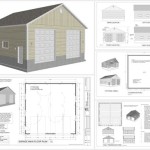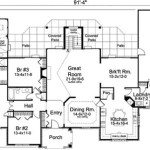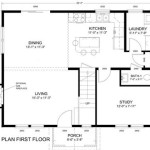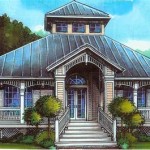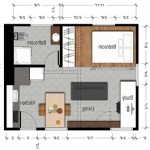Home Plans for Wooded Lots: Integrating Nature into Your Design
Building a home on a wooded lot presents both unique opportunities and specific challenges. The inherent beauty and privacy offered by a wooded environment can significantly enhance the living experience. However, careful planning and consideration are crucial to successfully integrate a home into the landscape while minimizing environmental impact. Home plans designed specifically for wooded lots address these considerations, ensuring a harmonious blend of architecture and nature.
The distinct characteristics of wooded lots, such as uneven terrain, mature trees, water features, and varying sunlight exposure, necessitate a tailored approach to home design. Standard suburban home plans often prove unsuitable, requiring significant modifications or even complete redesigns. Specialized home plans account for these variables, optimizing the home's placement, foundation, and overall structure to complement the natural surroundings.
The selection of an appropriate home plan for a wooded lot involves a multi-faceted process, encompassing site analysis, design considerations, and construction techniques. Understanding the specific constraints and opportunities presented by the land is paramount to achieving a successful outcome. A well-executed home plan will not only provide a comfortable and functional living space but also preserve the integrity and beauty of the natural environment.
Preserving the Natural Landscape
One of the primary goals when building on a wooded lot is to minimize disruption to the existing ecosystem. This requires careful planning during the design phase to preserve as many trees and natural features as possible. Home plans should prioritize minimal grading and excavation, reducing the impact on the surrounding soil and vegetation. Techniques such as building on stilts or using pier foundations can help elevate the structure above the ground, minimizing disturbance to the root systems of nearby trees.
A detailed site survey is essential to identify valuable trees and natural features that should be protected during construction. An arborist can provide expert advice on tree health and recommend measures to ensure their preservation. Protective fencing should be erected around designated trees to prevent damage from construction equipment. Furthermore, careful attention should be given to drainage patterns to avoid erosion and water runoff that could harm the surrounding vegetation.
Incorporating native plants into the landscaping design can further enhance the ecological integrity of the site. Native plants are adapted to the local climate and soil conditions, requiring less maintenance and providing habitat for local wildlife. Strategic placement of plants can also help to control erosion, improve drainage, and enhance the aesthetic appeal of the property. The selection of materials for walkways and driveways should also consider their permeability to allow rainwater to seep into the ground and replenish groundwater supplies.
Optimizing Natural Light and Views
Wooded lots often present challenges in terms of natural light penetration. The density of trees can limit the amount of sunlight that reaches the home, potentially creating a darker and more enclosed living environment. Home plans need to address this issue by incorporating design elements that maximize natural light and optimize views. Large windows, skylights, and strategically placed glass doors can help to bring sunlight into the interior spaces. The orientation of the home should be carefully considered to take advantage of southerly exposure, maximizing solar gain during the winter months.
Window placement should also consider the views offered by the surrounding landscape. Framing scenic vistas of trees, water features, or distant hills can create a sense of connection to nature and enhance the overall living experience. The use of floor-to-ceiling windows or expansive glass walls can blur the boundaries between indoors and outdoors, creating a seamless transition to the surrounding environment. However, it is important to consider the potential for heat loss or gain through large windows and implement appropriate energy-efficient measures, such as using low-E glass or installing window coverings.
The interior layout of the home should also be designed to maximize natural light distribution. Open floor plans can allow sunlight to penetrate deeper into the interior spaces, creating a brighter and more inviting atmosphere. The use of light-colored walls and ceilings can further enhance the effect of natural light, reflecting it throughout the room. The placement of interior walls and furniture should be carefully considered to avoid blocking sunlight and views. Mirrors can also be used strategically to reflect light and create a sense of spaciousness.
Selecting Appropriate Materials and Construction Techniques
The choice of building materials and construction techniques is crucial for minimizing the environmental impact and ensuring the long-term durability of the home on a wooded lot. Sustainable and locally sourced materials should be prioritized whenever possible, reducing the carbon footprint associated with transportation and manufacturing. Natural materials such as wood, stone, and recycled products can blend harmoniously with the surrounding landscape and create a more aesthetically pleasing design. The use of durable and weather-resistant materials is essential to withstand the rigors of the wooded environment, protecting the home from moisture, insects, and other potential hazards.
Construction techniques should also be tailored to the specific conditions of the wooded lot. As mentioned earlier, minimizing grading and site disturbance is crucial for preserving the natural landscape. Techniques such as building on stilts or using pier foundations can avoid the need for extensive excavation and reduce the impact on tree roots. Soil erosion control measures should be implemented during construction to prevent sediment runoff into nearby streams or wetlands. The use of erosion control blankets, silt fences, and temporary vegetation can help to stabilize the soil and prevent erosion.
Energy efficiency is another important consideration when building on a wooded lot. Properly insulated walls, roofs, and windows can reduce energy consumption and lower utility bills. The use of energy-efficient appliances, lighting fixtures, and heating and cooling systems can further minimize the environmental impact of the home. The placement of the home should also consider passive solar design principles, taking advantage of southerly exposure to maximize solar gain during the winter months and minimizing exposure to the sun during the summer months. Overhangs and awnings can provide shade during the summer, reducing the need for air conditioning. The incorporation of renewable energy sources, such as solar panels or wind turbines, can further reduce the home's reliance on fossil fuels.
Furthermore, consider the impact of construction activities on the surrounding ecosystem. Noise pollution should be minimized by using quieter equipment and limiting construction hours. Dust control measures should be implemented to prevent dust from spreading to nearby vegetation. Waste management practices should be carefully planned to minimize the amount of construction debris that ends up in landfills. Recycling and reuse of materials should be prioritized whenever possible. The construction site should be regularly cleaned to prevent litter and debris from accumulating.
Navigating the regulatory landscape is also a critical aspect of building on a wooded lot. Many jurisdictions have specific regulations regarding tree removal, erosion control, and stormwater management. It is essential to obtain all necessary permits and approvals before starting construction. Working with experienced professionals, such as architects, engineers, and contractors, can help to ensure that the home complies with all applicable regulations and codes. They can also provide valuable guidance on best practices for building on a wooded lot.
In conclusion, home plans for wooded lots require a holistic approach that considers the unique characteristics of the land, the importance of preserving the natural environment, and the need for a comfortable and functional living space. By carefully planning the design, selecting appropriate materials and construction techniques, and working with experienced professionals, it is possible to create a beautiful and sustainable home that seamlessly integrates with the surrounding woodland.

31 Wooded Lot Homes Ideas House Plans Design

Rustic House Plans Mountain Home Floor Plan Designs

Log Home Plans Floor Designs The House Designers

Charming Rustic House Plans Blog Eplans Com

A Diagram Of Our Home S Exterior Layout

Charming Rustic House Plans Blog Eplans Com

Landscaping A Wooded Lot Revolutionary Gardens

Log Home Plans Floor Designs The House Designers

Lake Cabin House Plan 2 Bedrms Baths 1333 Sq Ft 160 1011

Charming Rustic House Plans Blog Eplans Com

